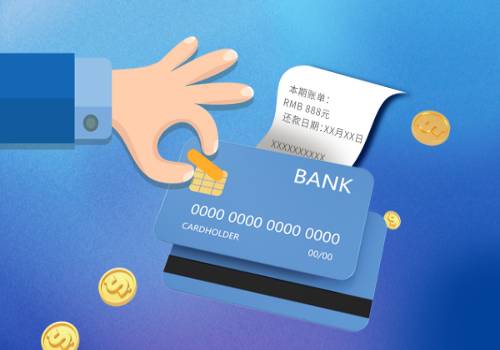天天精选!RocketMQ事务消息保证消息的可靠性和一致性
这篇讲解一下rocketMq的事务消息的原理
 (资料图)
(资料图)
在发送事务消息的时候,会加一个标识,表示这个消息是事务消息。broker接收到消息后,在我们之前看的代码里org.apache.rocketmq.broker.processor.SendMessageProcessor#sendMessage会判断是否是事务消息。
if (sendTransactionPrepareMessage) {
asyncPutMessageFuture = this.brokerController.getTransactionalMessageService().asyncPrepareMessage(msgInner);
} else {
asyncPutMessageFuture = this.brokerController.getMessageStore().asyncPutMessage(msgInner);
}
sendTransactionPrepareMessage=true表示是事务消息,所以走了一个单独的逻辑。
public CompletableFutureasyncPutHalfMessage(MessageExtBrokerInner messageInner) { return store.asyncPutMessage(parseHalfMessageInner(messageInner)); }
这里parseHalfMessageInner这个方法里面开始了偷梁换柱,把topic和queueId都改了,把原本的信息先存在变量里面。所以实际上这个消息发到了半消息专有的topic里面,topic名字叫做RMQ_SYS_TRANS_HALF_TOPIC
private MessageExtBrokerInner parseHalfMessageInner(MessageExtBrokerInner msgInner) {
MessageAccessor.putProperty(msgInner, MessageConst.PROPERTY_REAL_TOPIC, msgInner.getTopic());
MessageAccessor.putProperty(msgInner, MessageConst.PROPERTY_REAL_QUEUE_ID,
String.valueOf(msgInner.getQueueId()));
msgInner.setSysFlag(
MessageSysFlag.resetTransactionValue(msgInner.getSysFlag(), MessageSysFlag.TRANSACTION_NOT_TYPE));
msgInner.setTopic(TransactionalMessageUtil.buildHalfTopic());
msgInner.setQueueId(0);
msgInner.setPropertiesString(MessageDecoder.messageProperties2String(msgInner.getProperties()));
return msgInner;
}
然后其他代码还是和普通的消息一样,就是把事务消息做了转发,存在了RMQ_SYS_TRANS_HALF_TOPIC里面。
到这里发送半消息就成功了,然后最后客户端发送了半消息之后,会查一下本地事务的情况是否完成。这里有3种情况:commit、rollback、未知。完成和回滚都是确认的状态,这个比较好处理,比较难的是未知。我们先看能得到确认结果的情况。
如果完成和回滚,会给客户端发送结束事务的消息,这个消息叫END_TRANSACTION,包括消息里面包括了之前发送的半消息的id和offset。
broker处理的代码在org.apache.rocketmq.broker.processor.EndTransactionProcessor#processRequest中。就是根据offset拿到半消息,然后如果是commit,就是把原本的topic和queueId还原,发到原本的队列里面,这样就可以正常消费了。然后把这个半消息“删除”。如果是rollBack,也是拿到这个半消息,然后直接“删除”就可以了。接下来看一下怎么“删除”。
为什么我删除会打引号呢?因为半消息其实就是跟正常的消息一样,存在commitLog文件里面,mq的设计,就没有删除这个功能。所以所谓的删除其实就是把这个消息消费掉,不做任何处理,就是删除了。
想象一下,这个半消息有commit/rollBack/未知,3种状态,未知的肯定不能删除,那他怎么知道哪些消息是可以删除的呢?总不能所有的都再去客户端查一下事务的结果吧?mq怎么做的呢?前面提到的删除其实就是把这些commit和rollBack处理过后的半消息,再保存起来,后面消费半消息的数据的时候,只要从里面查一下是否需要删除就可以了。
这里又有一个问题,怎么把需要删除的半消息存起来呢?mq存储数据就是commitLog,所以其实这些需要删除的数据,就是又发到了一个特定的topic里面。这个topic名字是RMQ_SYS_TRANS_OP_HALF_TOPIC。主意区分,原本半消息的topic名字是half_topic,这个topic名字是op_half_topic,存储的是处理过后,可以删除的半消息。
所以说前面提到的带引号的“删除”,就是把消息发到op_half_topic就表示是删除了,这个op_half_topic消息的内容就是half_topic的offset。那么现在需要有个地方,来消费half_topic,然后判断是否存在于op_half_topic,如果是表示可以删除了,如果不是,就接着保存起来。
处理逻辑就在TransactionalMessageCheckService这个定时任务中。具体是在TransactionalMessageServiceImpl#check方法里面
@Override
public void check(long transactionTimeout, int transactionCheckMax,
AbstractTransactionalMessageCheckListener listener) {
try {
String topic = TopicValidator.RMQ_SYS_TRANS_HALF_TOPIC;
// 先拿到半消息
Set msgQueues = transactionalMessageBridge.fetchMessageQueues(topic);
if (msgQueues == null || msgQueues.size() == 0) {
log.warn("The queue of topic is empty :" + topic);
return;
}
log.debug("Check topic={}, queues={}", topic, msgQueues);
for (MessageQueue messageQueue : msgQueues) {
long startTime = System.currentTimeMillis();
MessageQueue opQueue = getOpQueue(messageQueue);
// 拿到半消息的最小偏移量
long halfOffset = transactionalMessageBridge.fetchConsumeOffset(messageQueue);
// 拿到op_half的最小偏移量
long opOffset = transactionalMessageBridge.fetchConsumeOffset(opQueue);
log.info("Before check, the queue={} msgOffset={} opOffset={}", messageQueue, halfOffset, opOffset);
if (halfOffset < 0 || opOffset < 0) {
log.error("MessageQueue: {} illegal offset read: {}, op offset: {},skip this queue", messageQueue,
halfOffset, opOffset);
continue;
}
List doneOpOffset = new ArrayList<>();
HashMap removeMap = new HashMap<>();
// 拉取op的消息(32条),op消息内容是half的offset,跟half_topic的最小offset比较,如果op的小于最小的,就说明已经处理过了,放在doneOpOffset,反之,则说明还没处理过,就先放在removeMap里面
PullResult pullResult = fillOpRemoveMap(removeMap, opQueue, opOffset, halfOffset, doneOpOffset);
if (null == pullResult) {
log.error("The queue={} check msgOffset={} with opOffset={} failed, pullResult is null",
messageQueue, halfOffset, opOffset);
continue;
}
// single thread
int getMessageNullCount = 1;
long newOffset = halfOffset;
long i = halfOffset;
// 然后对half_topic进行处理
while (true) {
if (System.currentTimeMillis() - startTime > MAX_PROCESS_TIME_LIMIT) {
log.info("Queue={} process time reach max={}", messageQueue, MAX_PROCESS_TIME_LIMIT);
break;
}
// 如果这个offset已经处理过了,就接着处理下一个
if (removeMap.containsKey(i)) {
log.debug("Half offset {} has been committed/rolled back", i);
Long removedOpOffset = removeMap.remove(i);
doneOpOffset.add(removedOpOffset);
} else {
// 如果没有处理过,就要把数据捞出来重新投递
GetResult getResult = getHalfMsg(messageQueue, i);
MessageExt msgExt = getResult.getMsg();
if (msgExt == null) {
if (getMessageNullCount++ > MAX_RETRY_COUNT_WHEN_HALF_NULL) {
break;
}
if (getResult.getPullResult().getPullStatus() == PullStatus.NO_NEW_MSG) {
log.debug("No new msg, the miss offset={} in={}, continue check={}, pull result={}", i,
messageQueue, getMessageNullCount, getResult.getPullResult());
break;
} else {
log.info("Illegal offset, the miss offset={} in={}, continue check={}, pull result={}",
i, messageQueue, getMessageNullCount, getResult.getPullResult());
i = getResult.getPullResult().getNextBeginOffset();
newOffset = i;
continue;
}
}
if (needDiscard(msgExt, transactionCheckMax) || needSkip(msgExt)) {
listener.resolveDiscardMsg(msgExt);
newOffset = i + 1;
i++;
continue;
}
if (msgExt.getStoreTimestamp() >= startTime) {
log.debug("Fresh stored. the miss offset={}, check it later, store={}", i,
new Date(msgExt.getStoreTimestamp()));
break;
}
long valueOfCurrentMinusBorn = System.currentTimeMillis() - msgExt.getBornTimestamp();
long checkImmunityTime = transactionTimeout;
String checkImmunityTimeStr = msgExt.getUserProperty(MessageConst.PROPERTY_CHECK_IMMUNITY_TIME_IN_SECONDS);
if (null != checkImmunityTimeStr) {
checkImmunityTime = getImmunityTime(checkImmunityTimeStr, transactionTimeout);
if (valueOfCurrentMinusBorn < checkImmunityTime) {
if (checkPrepareQueueOffset(removeMap, doneOpOffset, msgExt)) {
newOffset = i + 1;
i++;
continue;
}
}
} else {
if (0 <= valueOfCurrentMinusBorn && valueOfCurrentMinusBorn < checkImmunityTime) {
log.debug("New arrived, the miss offset={}, check it later checkImmunity={}, born={}", i,
checkImmunityTime, new Date(msgExt.getBornTimestamp()));
break;
}
}
List opMsg = pullResult.getMsgFoundList();
boolean isNeedCheck = opMsg == null && valueOfCurrentMinusBorn > checkImmunityTime
|| opMsg != null && opMsg.get(opMsg.size() - 1).getBornTimestamp() - startTime > transactionTimeout
|| valueOfCurrentMinusBorn <= -1;
if (isNeedCheck) {
// 重新投递
if (!putBackHalfMsgQueue(msgExt, i)) {
continue;
}
// 再重新确认事务
listener.resolveHalfMsg(msgExt);
} else {
pullResult = fillOpRemoveMap(removeMap, opQueue, pullResult.getNextBeginOffset(), halfOffset, doneOpOffset);
log.debug("The miss offset:{} in messageQueue:{} need to get more opMsg, result is:{}", i,
messageQueue, pullResult);
continue;
}
}
newOffset = i + 1;
i++;
}
// 更新offset
if (newOffset != halfOffset) {
transactionalMessageBridge.updateConsumeOffset(messageQueue, newOffset);
}
long newOpOffset = calculateOpOffset(doneOpOffset, opOffset);
if (newOpOffset != opOffset) {
transactionalMessageBridge.updateConsumeOffset(opQueue, newOpOffset);
}
}
} catch (Throwable e) {
log.error("Check error", e);
}
}
我讲解一下这个代码做了啥。我们先明确这个代码是要实现什么功能。就是消费half_topic,然后去根据op_half_topic的数据来判断half_topc的消息是否被处理过,处理过了就直接忽略、丢弃,如果没有处理过,就“保留”这个消息,等待后面事务确认了再处理。
这里“保留”我也是加了引号,因为mq消费是一条一条按顺序消费,如果中间有一个数据卡住了,后面数据就没法消费了。所以这里“保留”,其实也是消费了,只是他消费到了不确定结果的消息,他是重新投递到了half_topic,来实现“保留”的目的。
好了,明确了这个代码实现的功能,我们来一步步看一下细节。
首先是拿到half_topic和op_half_topic的offset,知道现在是消费到了哪里。然后去拉取op_half_topic,每次32条,op_half消息内容存的是half_topic的offset,只要判断这条op_half里面的offset小于half_topic的offset,就表示已经消费过了,放在doneOpOffset的list里面,如果op_half保存的offset大于half_topic的offset,就表示还没消费,放入removeMap,就表示这个半消息可以放心删除了。
这一步,通过消费op_half,跟half_topic的minOffset做比较,构建了doneOpOffset,和removeMap。
然后就是消费half_topic的消息,只要判断每条消息的offset是否在removeMap中,就表示可以删除,放入doneOpOffset中,直接消费下一条数据,所以这里其实也不用真的拉取half_topic的消息,只要用offset来判断就行,消费过了,offset+1,就可以去判断下一条消息。
如果half_topic的offset没有在removeMap中,就表示暂时还不知道结果,这时候就重新发送到half_topic,重新投递之后,然后给客户端发送一个检查事务的请求,客户端检测过后,还是用之前的END_TRANSACTION命令,再发给broker,broker就会放到op_half里面,等于就是重新发了一个半消息的流程,实现了闭环。
最后就是更新两个topic的offset了。之前的doneOpOffset保存下来,就是为了更新op_half的offset,只有都处理过了,才会更新,如果中间有一个没有处理,就会阻塞在那条消息。
总结:
所以现在的情况是这样的,对于half_topic的半消息如果有结果就忽略,如果没有结果就重新投递,不会阻塞,所以half_topic的offset会一直往后更新。但是op_half要等所有的都done了,才会更新offset。假设一种情况,如果op_offset1对于的是half_offset1这个消息,然后half_offset1刚好被消费,重新投递了。这是op_offset1找不到对应的半消息,所以不会被消费。但是不会被卡主,等到下次的时候,op_offset1这个数据的offset已经小于half_offset1这个消息的offset,所以这个op_offset1也会当做已经处理过了。
可以看到整个过程其实很巧妙,大家可以结合代码捋一捋。
到此这篇关于RocketMQ事务消息保证消息的可靠性和一致性的文章就介绍到这了,更多相关RocketMQ事务消息内容请搜索脚本之家以前的文章或继续浏览下面的相关文章希望大家以后多多支持脚本之家!
X 关闭
推荐内容
- 首批100个“浙江文化标识”培育项目发布 含良渚、上山文化
- 在湖湘大地上探索古代中国——张春龙与里耶秦简发掘
- 歌声传递中国文化“代代相传”最强音
- 《壬寅年》特种邮票在广州首发
- 王毅同马尔代夫外长沙希德举行会谈
- 年味来袭 北京稻香村办起微缩庙会
- 王毅同马尔代夫外长沙希德共同会见记者
- 2021年迎来爆发式增长 国漫累计观看人数突破3.4亿
- 荣成好运角天鹅季激活冬季旅游
- 冬奥赛会志愿者是怎样练成的?给1.9万人设23门必修课
最近更新
-

天天精选!RocketMQ事务消息保证消息的可靠性和一致性
资讯 -

天天亮点!段涛2023年一季度表现,广发利鑫灵活配置混合A基金季度涨幅4.78%
资讯 -

贝锐战略升级,做数智山河的“筑桥人”
资讯 -

与任何人走的太近,都是一场灾难! 热点评
资讯 -

每日信息:N8800A工艺_n8800
资讯 -

英雄水库_关于英雄水库的简介
资讯 -

2020本田CR-V评论与指南 必不可少的驱动器变得更好-全球聚焦
资讯 -

实木多层板是什么材质_实木多层|天天报资讯
资讯 -

大兴这个老旧小区展新颜,居民纷纷来点赞!_看点
资讯 -

看点:牙髓炎根管治疗要多久_牙髓炎根管治疗过程
资讯 -

徽派资管圈第二届年会成功举办 全球热讯
资讯 -

头条焦点:广轻工业职业技术学院官网专业_广轻工业职业技术学院官网
资讯 -

润月雅筑项目第一批次房源认筹须知|天天最新
资讯 -

我国首个大型页岩气田“气油并进” 页岩油产量突破2万吨
资讯 -

一图看懂:连续14天成交超万亿 有何指示意义?_天天播报
资讯 -

昭通普通话考试咨询电话一览
资讯 -

受贿超千万元 上海市松江区法院原院长张铮一审获刑十年半 全球速看料
资讯 -

株洲市第十三届“阅读的力量”教师读书论坛举行
资讯 -

【环球新视野】心织笔耕
资讯 -

国际观察:再爆监听丑闻 “窃听帝国”击穿道德和法律底线-世界聚焦
资讯 -

热门:记者:张玉宁伤情恢复良好 已可以参加对抗训练
资讯 -

我国首个大型页岩气田“气油并进”页岩油产量突破2万吨从中国石油化工集团有限公司江汉油田涪陵页岩气田获悉,随着页岩油开发工艺持续优化,日前该气田复兴区块页岩油生产取得阶段性成果,累计产油突破2万吨,呈现“气油并进”的良好局面
资讯 -

警用蓝色标准色号rgb_标准警蓝色CMYK是多少 当前速看
资讯 -

全球焦点!今日国际金价实时行情(2023年4月23日) 焦点快报
资讯 -

荔湾这些项目协议总投资超550亿元!2023年幼儿园报名启动|一周热点
资讯 -

北京一女局长被查时撒泼耍赖是什么情况-当前热门
资讯 -

浙商证券:给予爱施德买入评级|环球报资讯
资讯 -

冷热水龙头怎么拆卸 冷热水龙头怎么拆_环球报道
资讯 -

D40商品报价动态(2023-04-23)
资讯 -

美国6旬老汉头等舱里强吻男空乘,下飞机就被逮捕
资讯 -

世界快播:《王者荣耀》2023年4月23日每日一题怎么选
资讯 -

虎牙直播App在苹果下架,客服称在进行优化-环球热头条
资讯 -

疑因家庭矛盾 深圳一女子深夜公园跳湖轻生-前沿资讯
资讯 -

【37塔罗】[ZeeNuNew]李海5月的事业运势
资讯 -

最新资讯:2023山东潍坊市昌邑市昌盛产业发展投资有限公司初选成绩
资讯 -

50指数防晒效果好吗 50指数|资讯
资讯 -

昨夜今晨:江苏常熟实行工资全额以数字人民币发放 新版微信增加微信音乐
资讯 -

时隔四年,李升基亚洲演唱会门票全部售罄!网友:终于售罄了 看点
资讯 -

天地神兽金刚第三部_神兽金刚第二部
资讯 -

松下或在俄克拉荷马州建电动车电池工厂 热文
资讯 -

降压药物无效?超声肾脏神经去除术或成为高血压患者的替代疗法!
资讯 -

上海周边比较好玩的地方有哪些地方_上海周边好玩的地方
资讯 -

当前播报:反诈宣传“零距离”,守护群众“钱袋子”
资讯 -

焦点信息:哥伦比亚总统与委内瑞拉反对派会面
资讯 -

海淀:圆明园里开启阅读之旅 天天速讯
资讯 -

北京创新谷播报 每日观察
资讯 -

环球快消息!print spooler无法启动怎么办_print spooler
资讯 -

潮汕手帕_关于潮汕手帕介绍-天天热点
资讯 -

环球焦点!东北大学辽宁分校的历史_东北大学辽宁分校
资讯 -

被刑拘过会影响孩子吗
资讯 -

男生减肥瘦脸的方法有哪些视频_男生减肥瘦脸的方法有哪些 焦点日报
资讯 -

什么是清水混凝土墙面_什么是清水混凝土_当前通讯
资讯 -

环球要闻:没对比没伤害 裁员上万人的谷歌CEO年薪却高达15亿
资讯 -

【AI绘画】赛博朋克,有点酷
资讯 -

鹤城双村:百亩玫瑰花海唯美上线
资讯 -

世界看点:公共设施包括哪些_公共设施
资讯 -

天涯歌女歌词歌曲_天涯歌女歌词|全球消息
资讯 -

世界快报:琼州海峡进岛客货车辆实行全预约购票过海
资讯 -

东京奥运会开幕式时间_东京奥运会开始时间|天天播报
资讯 -

实实在在最佳生肖_实实在在代表什么生肖
资讯 -

商标logo查询_商标logo查询购买 当前资讯
资讯 -

巴西侨界热议“新时期中巴机遇”:转型有新机 乐做摆渡人|全球聚焦
资讯 -

每日头条!卡尔迪罗拉:我从小就是米兰球迷,收到国米报价时我哭了
资讯 -

车辆变更颜色、临时号牌申领……海南交警解答热点问题 看热讯
资讯 -

七彩督院 五色共建 环球观热点
资讯 -

找法网登录 找法网官网|全球看热讯
资讯 -

全球头条:蓝颜知己是什么意思 蓝颜知己
资讯 -

吃姜片的好处和坏处 吃姜片的好处和坏处有哪些呢
资讯 -

高端复印机哪个好_高端复印机碳粉
资讯 -

北京市教委:2023年义务教育入学工作启动,5月5日起采集小学和初中入学信息 天天热推荐
资讯 -

琦玉为什么不是s_琦玉为什么那么强
资讯 -

莫耶斯:两年进两次欧战四强,这感觉很特别 环球热消息
资讯 -

巴基斯坦东部发生一起交通事故 造成7死4伤
资讯 -

湘潭知识产权保护工作今年将如何推进?这场会议有答案|每日看点
资讯 -

全球速讯:豪美新材:2022汽车轻量化收入翻番,高端自主系统门窗品牌突出重围
资讯 -

有着数!江西向粤港澳市场发放1680万文化和旅游消费券
资讯 -

【报资讯】快船G3惜败太阳!威少+鲍威尔72分,5后卫太疯狂,戈登低迷太麻烦
资讯 -

焦点关注:激光脱毛会不会影响备孕_激光脱毛会影响怀孕吗
资讯 -

参数图集丨春风渐暖,年轻人这样走入线下社交
资讯 -

快资讯丨“环杭州湾旅游联盟”成立 多地共同促进文旅业发展
资讯 -

黄梅县气象台发布暴雨黄色预警【III级/较重】【2023-04-22】-天天通讯
资讯 -

李璇:对四川九牛的前景深感担忧,真要退出球员的去向怎么办? 天天热头条
资讯 -

环球微速讯:中物联:2022年货车司机从业状况调查报告
资讯 -

全国“美食指南”发布,新疆这些特色食品入榜
资讯 -

ipadpp助手软件源(ipad pp助手)|全球即时看
资讯 -

成交额TOP20 | 特斯拉涨超1%;宝洁业绩超预期,股价创3月以来最大单日涨幅
资讯 -

美国各银行存款上周减少762亿美元,大型机构引领外流
资讯 -

《热血高校》:一个充满青春和梦想的大学校园-速看
资讯 -

全民健身线上运动会实现四季全覆盖
资讯 -

当前要闻:国乒女单包揽冠亚军!孙颖莎3:0大获全胜,比赛规则今天有所变化
资讯 -

当前时讯:温州那个医院看阴道松弛便宜?哪些人群适宜做阴道紧缩术
资讯 -

降低运营成本 鼓励诚信经营
恩施州实行农民工工资保证金差异化存储资讯 -

田野怎么画 田野怎么画? 世界快播报
资讯 -

全球微头条丨三六零安全科技股份有限公司2023第一季度报告
资讯 -

中航西飞:公司计算2022年度劳动生产率时,包括了2022年度公司缴纳增值税及附加税费,公司2023年度上述税费较2022年度将大幅下降,故2023年度全员劳动生产率较2022年度相应予以下降|全球热头条
资讯 -

焦点速讯:量子计算机在信用评分卡组合优化中的应用最优题解
资讯 -

今日精选:电热毯能连续开着吗?
资讯 -

佘诗曼摆16桌为母庆生排场大,70岁妈妈满头白发穿花毛衣超时髦,和女儿同框像-天天资讯
资讯 -

韩国2月前20天出口同比下降11% 芯片出口下跌近40% 当前热点
资讯 -

世界最资讯丨a2驾驶证扣3分怎样恢复-a2驾驶证扣3分怎么处理
资讯
Copyright © 2015-2022 华东五金网版权所有 备案号:京ICP备2022016840号-41 联系邮箱:2 913 236 @qq.com


